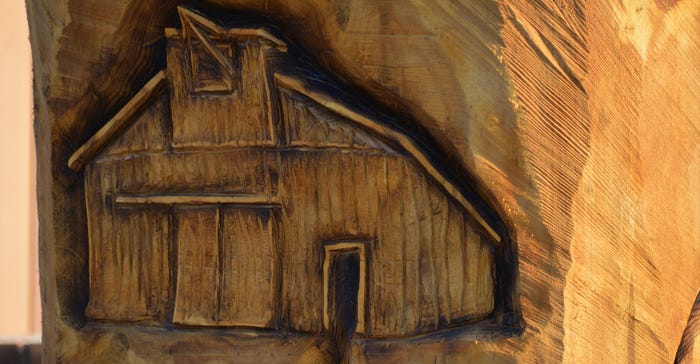November 11, 2020

The barn was the heart of Coralan Farm, where I grew up in Menominee County. Without it, and the land, three generations of my family could not have made a living there as farmers.
Dad and I loved the barn, built in 1910. I spent as much time there as possible, even to do some writing, nestled in my hay-bale fort.
Sold in the 1960s, when my parents’ health was compromised by the demands of farming, we saw the solid barn deteriorate under successive owners. A third buyer wanted to restore it, but it was destroyed because the roof had been allowed to develop gaping holes. Wasted.
Sadness over the loss propelled me to become an advocate for barns. When Jennifer Kiel asked, in 2013, if I would like to write a feature on barns for Michigan Farmer, a publication that was a fixture in the Coralan Farm household, I eagerly accepted.
Barn owners have welcomed me into their barns and have shared personal stories, family albums, joys and sorrows. You have invited me to your table, offered a place to stay in my travels and sent all-things-barn my way, “just because.” We keep in touch.
Barn carvings
Barns deserve respect, and so do the trees from which they were built. Last September, my husband and I had a carving done from the 12-foot base of a 150-plus-year-old red oak that stood beside our house.
We had it trimmed out over the years, which was very expensive, but we saw in the past three years, limbs were beginning to die out here and there, including a big one. We also were starting to see a few ants. We knew ants had infested another red oak that, while it looked good from the outside, was bad inside when we cut it.
Also, the big red oak was right next to our garage, and we knew if straight-line winds or a tornado came through, as has happened, our entire house would be at risk. Winds here predominantly come out of the southwest, putting our house at risk. Taking it down was a very difficult decision. I left the day they came to do the cutting, and I cried.
We honored its life by making it a tribute to American barns. Of the 11 barns that carver Jim Denkins asked me to choose to grace its form, seven have appeared in Michigan Farmer. Six of them are well-cared for by private owners or by groups formed to preserve them. The seventh is struggling. Another barn is gone, but framing was salvaged.
A one-of-a-kind barn in the group is endangered. One is a composite in honor of all traditional barns, and one is the Chase Stone Barn, one of just two remaining fieldstone barns in Wisconsin — saved by people who recognized its significance.
When a pioneer family, of necessity, huddled in a barn with their animals so all could survive, would they ever have thought barns, of choice, would one day become extraordinary homes, galleries, wineries, or even dental offices? Likely not. They would, however, understand why people still look for property because of a barn and its potential.
Barns are changing. Michigan Farmer is changing. We have some great things in store to spread the love for barns around and, importantly, the message of their value in a changing world.
My passion for barns continues too, with the Barn Believers Community Project Fund, which works to preserve barns and barn history (barnbelievers.org). It continues with the writing about a man who loved his barn, his wife, his family and a place called Coralan Farm. My father. A Michigan farmer.
About the Author(s)
You May Also Like




